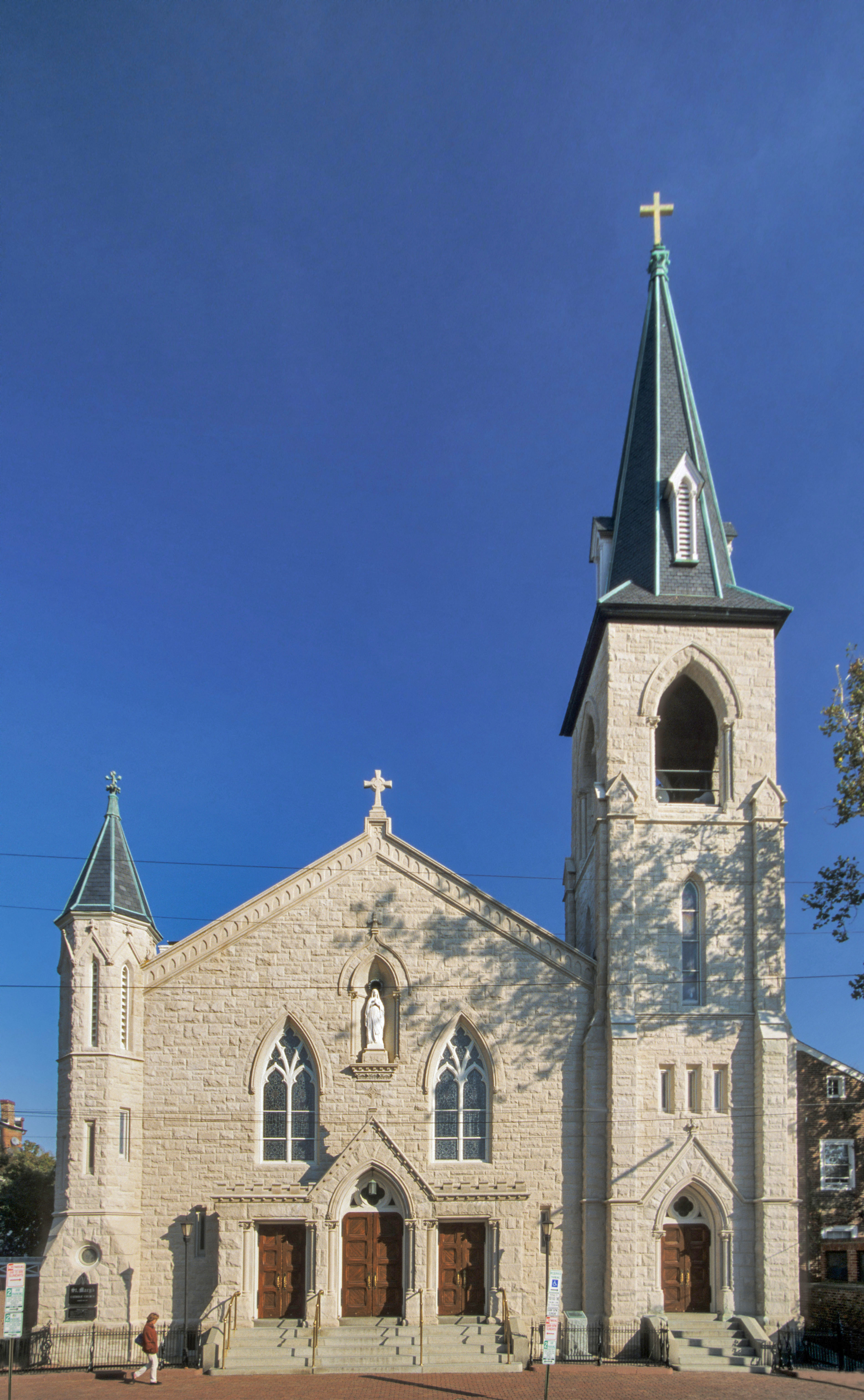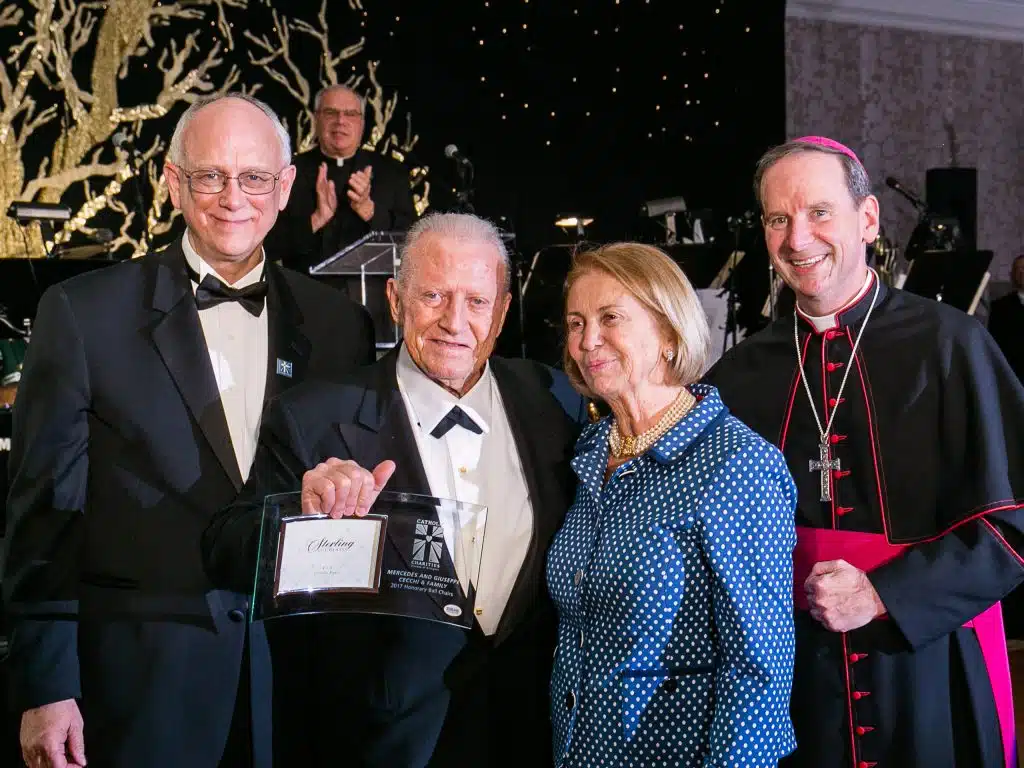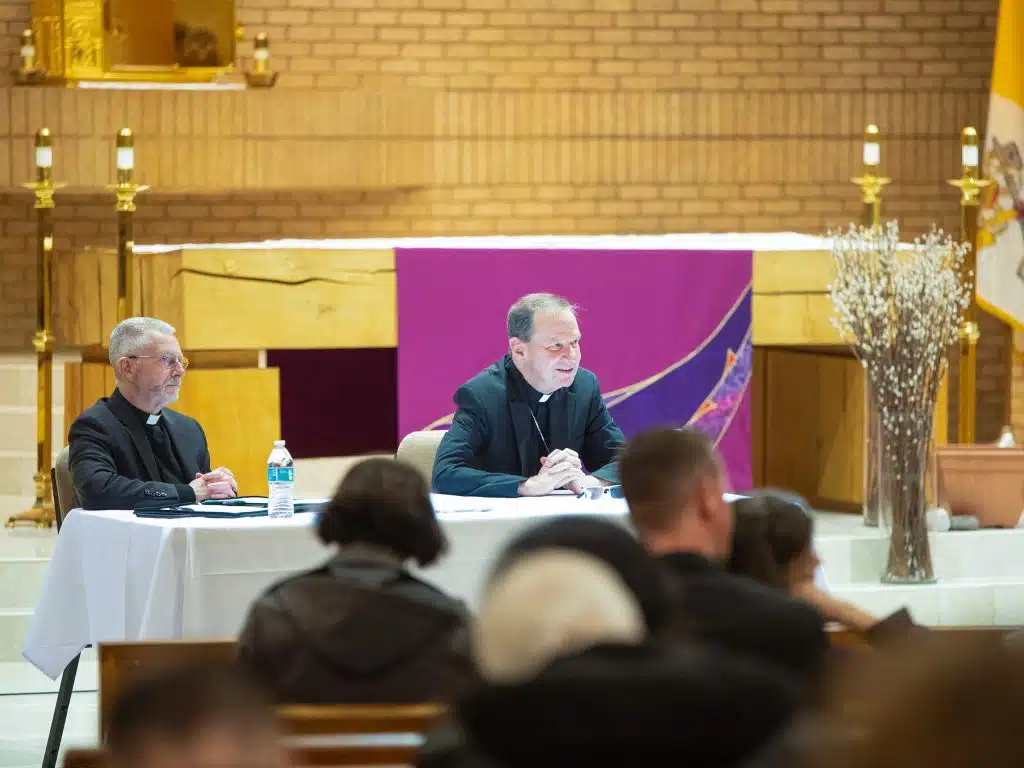In a city as historical as Alexandria, there’s plenty to see and experience. If you know where to look, there’s lots of local Catholic history, too. Tim Deerr, a parishioner of the Basilica of St. Mary in Alexandria, likes showing off that side of the city.
“I didn’t set out to do a Catholic tour,” he said. “I love history and I love my hometown, so I take friends and family to show them the sites, and when the new pastor first arrived, I incorporated a number of Catholic sites into the tour.”
Places such as the basilica are obviously Catholic, but Deer notes that Catholics have made their impact throughout the city. “Bricks from the dismantled original St. Mary Church were incorporated into the porch and columns of the Alexandria Lyceum,” said Deerr. “Then I usually say with a straight face, ‘So St. Mary has been a pillar of the community for a long time.’ ”
Here are some sites along Deerr’s tour, along with other places of Catholic significance. Depending on the course walkers take, the route will be about four miles.
The corner of Princess and Pitt Streets
At the intersection of Pitt and Princess Streets, a French military chaplain celebrated what is believed to be the first public Mass in Virginia. ZOEY MARAIST | CATHOLIC HERALD
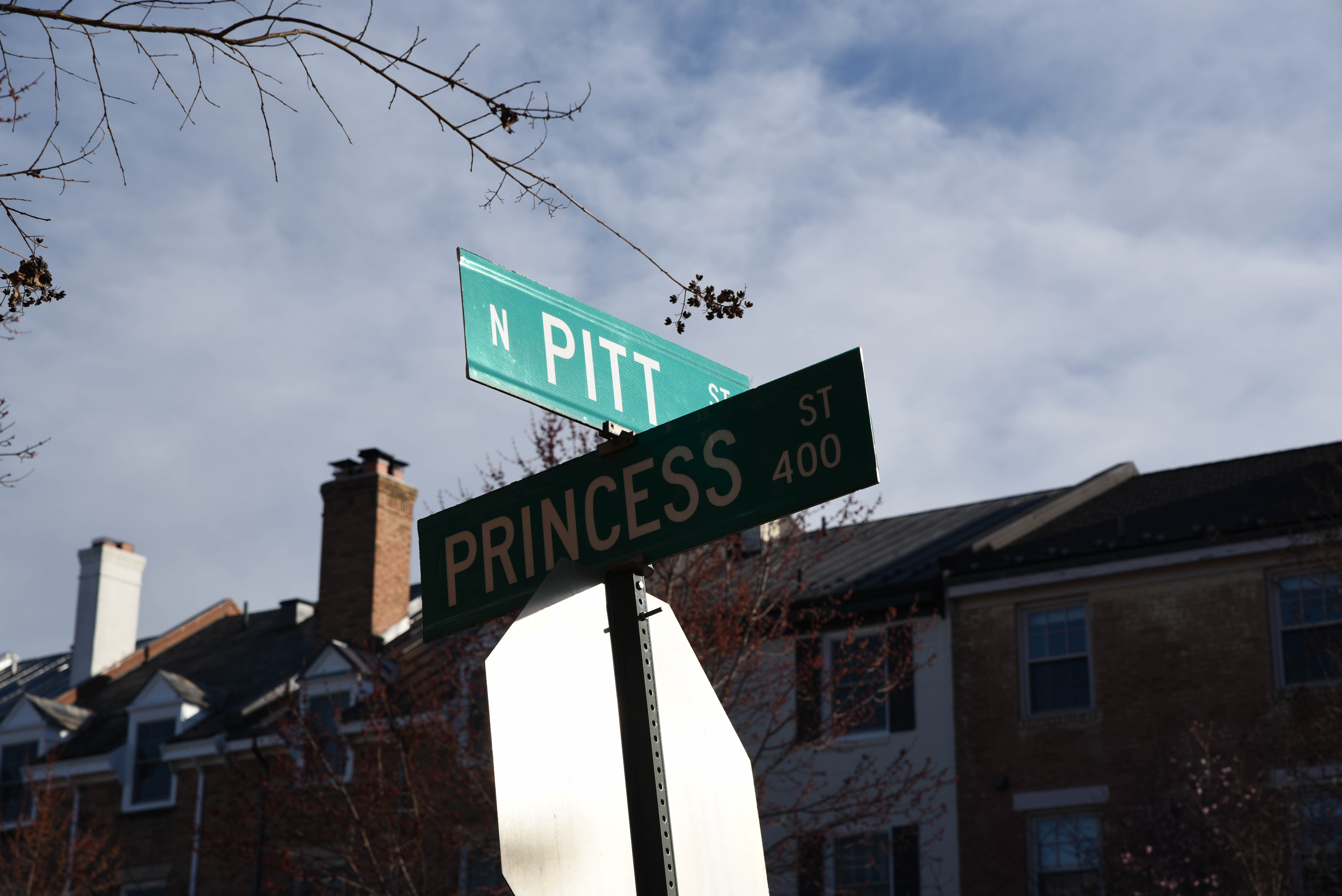
At the corner of Princess and Pitt streets, it is believed the first public Mass was celebrated in 1781 in a building owned by the Church of England’s Christ Church. The celebrant was a chaplain serving in Rochambeau’s French Army.
Years later in 1788, Col. John Fitzgerald, an aide-de-camp of George Washington during the Revolutionary War, hosted a St. Patrick’s Day fundraising party for the creation of a Catholic church, to which Washington contributed. Before it was built, Mass and a confirmation were held in Fitzgerald’s home at the corner of King and Fairfax streets, now the site of a Burke and Herbert Bank.
St. Mary’s Cemetery
1000 S. Royal St. Open daily 8 a.m. to 5 p.m., no pets allowed.
The first home of St. Mary Church is the current site of St. Mary Cemetery, located next to the Capital Beltway. The first person buried there was 33-year-old Cavan Boa. His headstone reads, “All you that come my grave to see/ Prepare yourselves to follow me/ Repent and turn to God in time/ For I was taken in my prime.”
Across the George Washington Memorial Parkway is the Contrabands and Freedmen Cemetery. During the Civil War, Alexandria was occupied by Union troops and quickly became a haven for runaway slaves. To provide a burial ground for the refugees, the military governor seized property owned by Francis L. Smith, who was Robert E. Lee’s lawyer and a wealthy parishioner of St. Mary.
After the war, Smith regained his property and years later his descendants conveyed the land to the Diocese of Richmond, and its leader, Bishop Denis J. O’Connell. The diocese sold the land in 1946 and later a gas station and an office building were built on the property. Today, a memorial and gravestones mark the burial grounds.
Basilica of St. Mary
310 S. Royal Street. Open every Monday through Friday from 5:30 a.m. to 9 p.m., Saturday from 7:30 a.m. to 7:30 p.m., and Sunday 6:30 a.m. to 6 p.m.
The Basilica of St. Mary in Alexandria was founded in 1795. WITOLD SKRYPCZAK | ALAMY STOCK PHOTO
Though the parish was founded in 1795, the church moved to its current location in 1826. Several schools have been associated with the parish over the years, including the more than 150-year-old Basilica School of St. Mary on Green Street. The church has been renovated many times, including after lightning set it ablaze in 1929.
During excavations in 1826, a coffin bearing the body of a man wearing a Revolutionary War uniform was found. The unknown man was reinterred in the Old Presbyterian Meeting House graveyard next door. Nearly a century later in 1929, a memorial was placed over the grave. A moving inscription on the Tomb of the Unknown Soldier of the Revolutionary War reads:
“Here lies a soldier of the Revolution whose identity is known but to God. His was an idealism that recognized a Supreme Being, that planted religious liberty on our shores, that overthrew despotism, that established a people’s government, that wrote a Constitution setting metes and bounds of delegated authority, that fixed a standard of value upon men above gold and lifted high the torch of civil liberty along the pathway of mankind. In ourselves his soul exists as part of ours, his memory’s mansion.”
During the Civil War, St. Mary was one of only two churches in the city allowed to hold regular religious services, according to Deerr. “Christ Church continued having services only for Union officers, so St. Mary was actually the only church having services for its own congregation,” he said.
Other churches became hospitals or were used by Union troops, but St. Mary escaped that fate due to some persistent Irishmen. According to the “Civil War Diary of Ann S. Frobel,” in 1862, “They wanted to make a hospital of the Catholic Church (but) a regiment of Irish Catholics swore that the first man who attempted to take possession of (the) church, they would kill him on the spot. And they let the Catholic Church alone.”
In 2018, in recognition of its beauty, historical significance and vibrant parish life, the Vatican named St. Mary a minor basilica, and the church officially became known as the Basilica of St. Mary. Today, the parish is an active community of nearly 10,000 parishioners.
St. Joseph Church
711 N. Columbus Street.
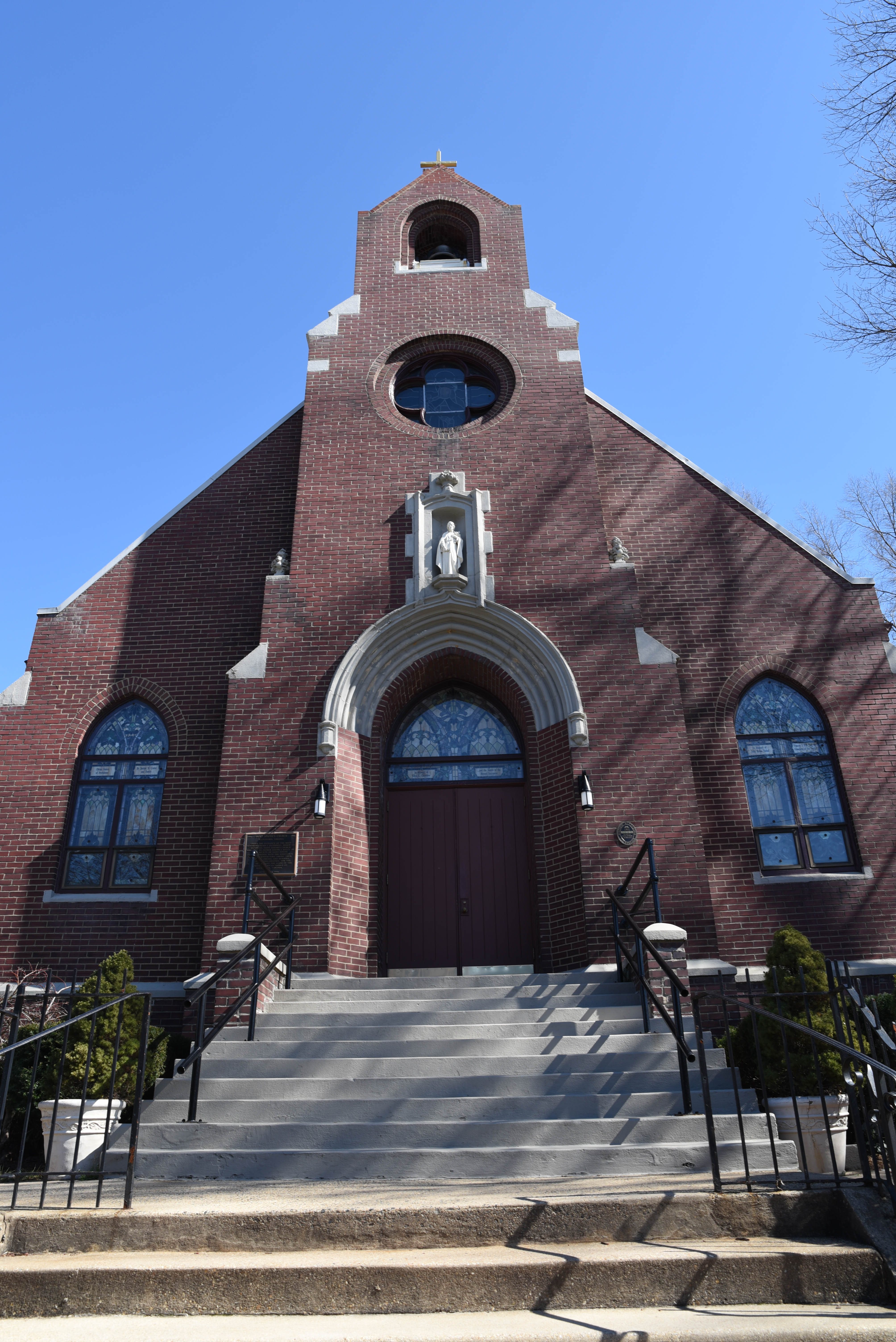
St. Joseph Church in Alexandria was first established as a parish for African Americans. ZOEY MARAIST | CATHOLIC HERALD
Though slavery ended in the commonwealth after the Civil War, the racist legacy of the institution endured, particularly through Jim Crow laws. According to “200 Years for Christ,” though slave galleries were removed from St. Mary in 1881, the north wing became the “colored” wing. Sunday school classes and parish ministries were segregated, too. Black parishioners longed for a church of their own.
Their new spiritual home was St. Joseph Church, built nearly a mile north of St. Mary on North Columbus Street. According to the St. Joseph website, in 1913, Thomas Blair, a St. Mary sexton, referred to by many as the “Father of Saint Joseph’s Church,” formed a committee that obtained permission from Bishop O’Connell to establish a parish for black Catholics. Philadelphia’s Mother Katharine Drexel, now a saint, learned of their efforts and contributed $8,000. Bishop O’Connell laid the cornerstone for the English Gothic-style church in 1915.
In 1969, St. Joseph became a territorial parish, not one exclusively for African Americans, though it continues to have a strong African American presence amid its more than 450 parishioners. Josephite priests staff the parish.
Pauline Books and Media
1025 King St. Open Monday noon to 6 p.m., Tuesday through Saturday 10 a.m. to 6 p.m., closed Sunday.
Amid the boutiques and cafes of Old Town is a Catholic bookstore run by the Daughters of St. Paul. Besides lots of books, the store sells religious statues, crucifixes, religious greeting cards and DVDs.
Christ House Thrift Store
125 S. West St. Open Monday 10 a.m. to 3 p.m., Tuesday through Saturday 10 a.m. to 4 p.m., closed Sunday.
Christ House is a men’s shelter run by diocesan Catholic Charities. Its basement is a food pantry, and its dining room serves dinner to the homeless and hungry every night of the year.
While people can volunteer there, the casual passerby is welcome to stop by the thrift store, which has clothes, jewelry and knickknacks for sale. Proceeds benefit the Catholic Charities Emergency Assistance Program.
